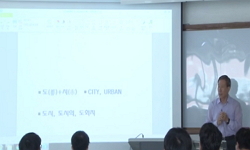Soil chemical properties can show a high degree of spatial variability by both inherent soil forming factors and land use activities. In assessing soil quality on a regional scale, this spatial variability must be quantified for understanding the ef...
http://chineseinput.net/에서 pinyin(병음)방식으로 중국어를 변환할 수 있습니다.
변환된 중국어를 복사하여 사용하시면 됩니다.
- 中文 을 입력하시려면 zhongwen을 입력하시고 space를누르시면됩니다.
- 北京 을 입력하시려면 beijing을 입력하시고 space를 누르시면 됩니다.
https://www.riss.kr/link?id=A101778268
- 저자
- 발행기관
- 학술지명
- 권호사항
-
발행연도
2015
-
작성언어
English
- 주제어
-
자료형태
학술저널
-
수록면
-
- 제공처
- 소장기관
- ※ 대학의 dCollection(지식정보 디지털 유통체계)을 통하여 작성된 목록정보입니다.
-
0
상세조회 -
0
다운로드
부가정보
다국어 초록 (Multilingual Abstract)
forming factors and land use activities. In assessing soil quality on a regional scale, this spatial variability
must be quantified for understanding the effects of management practices on soils. For assessing spatial
variability in soil chemical properties, we have analyzed pH, EC, and available P in soils collected from
42 different orchard farms in Chungcheong province, Korea. A high degree of spatial variability was
found from county to county and from field to field in a county. The spatial distribution pattern differed
among the soil properties. However, relatively higher variability was observed in available P than pH and
EC. Due to the high spatial variability, we used a bin averaging method to investigate regional correlations
among the soil properties. Most significant relationships were found between EC and available P
and between EC and pH, respectively, suggesting that the large spatial variability was associated with the
application of inorganic or organic fertilizers
Soil chemical properties can show a high degree of spatial variability by both inherent soil
forming factors and land use activities. In assessing soil quality on a regional scale, this spatial variability
must be quantified for understanding the effects of management practices on soils. For assessing spatial
variability in soil chemical properties, we have analyzed pH, EC, and available P in soils collected from
42 different orchard farms in Chungcheong province, Korea. A high degree of spatial variability was
found from county to county and from field to field in a county. The spatial distribution pattern differed
among the soil properties. However, relatively higher variability was observed in available P than pH and
EC. Due to the high spatial variability, we used a bin averaging method to investigate regional correlations
among the soil properties. Most significant relationships were found between EC and available P
and between EC and pH, respectively, suggesting that the large spatial variability was associated with the
application of inorganic or organic fertilizers
동일학술지(권/호) 다른 논문
-
고추 탄저병 저항성 중간모본 ‘원예 100005호 ’,‘원예 100006호’ 육성
- 忠北大學校 農業科學硏究所
- 양은영,김수,채영,채수영,조명철,문지혜,박태성,이우문,곽정호
- 2015
-
벼 조생흑찰의 시비조건에 따른 생육 및 안토시아닌 함량변이
- 忠北大學校 農業科學硏究所
- 오성환,김상열,최원영,서종호,황정동,이휘종,조준현,권영업,남민희,이철원
- 2015
-
- 忠北大學校 農業科學硏究所
- 이휘종,최원영,김상열,서종호,황정동,오성환,정진교,김주일,구현나,김길하
- 2015
-
AgCl 침전 반응을 이용한 토양 용액 중 염소이온의 간이 정량
- 忠北大學校 農業科學硏究所
- 부혜솔,박지원,한광현
- 2015




 RISS
RISS





